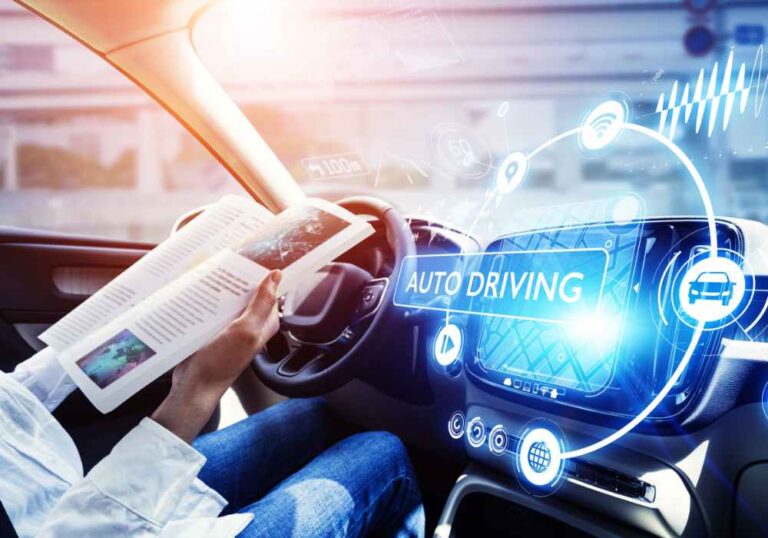The automotive industry is at the cusp of a monumental shift, propelled by advancements in technology that promise to redefine the way we experience transportation. Autonomous vehicles (AVs) and driver assistance systems (DAS) are revolutionizing the concept of driving, presenting a vision of safer, more efficient, and convenient mobility.
As we peer into the future, it becomes increasingly evident that the landscape of transportation is poised for transformation, with Autonomous vehicles and driver assistance systems leading the way.
The Rise of Autonomous Vehicles: Autonomous vehicles, once relegated to the realm of science fiction, have rapidly evolved into a tangible reality. These vehicles, equipped with an array of sensors, cameras, and advanced algorithms, possess the capability to navigate roads and make driving decisions autonomously, without human intervention. Companies such as Tesla, Waymo, and Cruise have made significant strides in the development and deployment of AV technology, conducting extensive testing on public roads and inching closer to widespread adoption.
One of the primary drivers behind the push for autonomous vehicles is the promise of enhanced safety. Human error is a leading cause of accidents on the road, resulting in thousands of fatalities each year. AVs, with their ability to react to their surroundings in real-time and adhere to traffic laws with precision, hold the potential to drastically reduce the incidence of accidents. Moreover, AVs can provide increased accessibility to transportation for individuals with disabilities or limited mobility, fostering inclusivity and independence.
However, the path to fully autonomous driving is not without its challenges. Technical hurdles, regulatory frameworks, and societal acceptance are key factors that must be addressed to facilitate the widespread adoption of AVs. Concerns surrounding cybersecurity, liability in the event of accidents, and the displacement of traditional jobs also pose significant considerations that must be carefully navigated.
Driver Assistance Systems: Bridging the Gap, While fully autonomous vehicles remain on the horizon, driver assistance systems are already making their mark on the automotive landscape. DAS encompasses a range of technologies designed to augment the driving experience, assisting with tasks such as lane-keeping, adaptive cruise control, and collision avoidance. These systems serve as a stepping stone towards full autonomy, offering a glimpse into the future of driving while still requiring human oversight and intervention.
The proliferation of DAS has been facilitated by advancements in artificial intelligence and sensor technology, enabling vehicles to interpret and respond to their environment with a high degree of accuracy. Features such as automatic emergency braking and blind-spot monitoring are becoming increasingly common across a wide range of vehicles, enhancing safety and convenience for drivers.
Moreover, DAS has the potential to alleviate the burden of congestion and improve traffic flow on roadways. Adaptive cruise control systems, for example, can maintain a safe distance from other vehicles and adjust speed accordingly, helping to mitigate the stop-and-go patterns that contribute to traffic congestion. As these systems become more sophisticated and widespread, the collective impact on overall traffic efficiency could be substantial.
Looking Ahead: Challenges and Opportunities: As we look to the future of driving, it is clear that autonomous vehicles and driver assistance systems will play a pivotal role in shaping the transportation landscape. However, realizing the full potential of these technologies will require concerted efforts from stakeholders across various sectors.
Addressing the regulatory and legal considerations surrounding AVs will be paramount, as policymakers grapple with questions of safety standards, liability, and infrastructure requirements. Collaboration between government agencies, industry leaders, and advocacy groups will be essential to develop cohesive regulatory frameworks that foster innovation while prioritizing public safety.
Moreover, continued investment in research and development will be crucial to overcome the technical challenges that remain barriers to widespread adoption. Advancements in sensor technology, machine learning algorithms, and connectivity will drive the evolution of AVs and DAS, unlocking new possibilities for enhanced safety, efficiency, and convenience.
In Conclusion, The future of driving is undeniably intertwined with the evolution of autonomous vehicles and driver assistance systems. As these technologies continue to mature and proliferate, they have the potential to revolutionize the way we experience transportation, offering safer, more efficient, and accessible mobility solutions. While challenges remain on the road ahead, the promise of a future where accidents are rare, congestion is minimized, and transportation is more inclusive and convenient is within reach. As we navigate this transformative journey, collaboration, innovation, and a commitment to safety will be our guiding principles, paving the way for a brighter future on the road.
Click here to view our different packages or click here to book your road test.
Lastly, our services are extended to Toronto, North York, Etobicoke, Scarborough, Vaughan and Brampton







